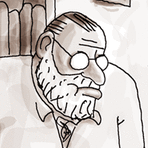After a stroke at age 30, she had to learn how to walk again
Published in Mom's Advice
Every morning at 8 a.m., Honey German calls her husband, Nuni.
He goes to work much earlier than her, so they've made a routine of touching base once Honey wakes up.
It's such a habit that when Nuni didn't get a call from Honey one July morning, he knew it was a red flag.
Nuni tried ringing her once. Twice. Three times. Four. Each call went to voicemail.
"Something isn't right," Nuni thought.
This was during the height of the COVID-19 pandemic. As an employee of the City of New York, Nuni was deemed an essential worker. But at that moment, he didn't care. He got on the subway and headed home.
When Nuni got to their apartment, he found Honey, who was 30 at the time, lying on the floor next to their bed.
"What's going on? Are you OK?" he asked.
"I was just sleeping," Honey slurred.
While Honey was conscious enough to hear and respond to her husband, she couldn't see him. He tried to get her to sit up, but she couldn't move anything on her left side. Her arm and hand lay limp. Her leg and foot did, too.
Nuni dialed 911.
When the paramedics came, they determined Honey was having a stroke.
At the hospital, doctors found a blood clot in her brain. She needed a procedure to remove the clot.
The procedure was successful. However, that was only the first step in Honey's journey of healing.
When she woke up, doctors told her to move her left leg. She couldn't.
"Try moving your left arm," someone said. But it wouldn't work.
For the next week, her medical team kept challenging her: Wiggle your left toes. Bend one of your left fingers.
Nothing.
She was then transferred to a rehabilitation center. Each day brought hours of physical therapy. Eventually, Honey was able to move her left pinkie. Then she could make a fist. Then she could bend her elbow.
Three weeks later, she took a few steps using a walker. Otherwise, she used a wheelchair.
Honey returned home to a two-story loft with stairs. While she was determined to get around the way she always had, her landlord realized she wasn't there yet. She and Nuni were allowed to move to a one-floor apartment with a large balcony.
Honey continued physical therapy, often on that balcony. Therapists asked her to balance on her left foot. Honey would end up in tears.
"My brain constantly felt fearful of doing things I normally do," Honey said.
She came to see physical therapy as a test in trusting herself – getting her brain to understand that, yes, she can use her left side.
Over four years of work, she's gone from using a wheelchair to a cane to now a brace around her left ankle. Maybe she doesn't have the smooth gait that she had before the stroke, but she's already proven wrong the doctor who told her, "You'll never fully walk again."
Honey has recovered 80% mobility on her left side. She still identifies as a person with a disability. She's received work-from-home accommodations from her employer. And because she continues to struggle with her balance, an issue that will likely persist, she doesn't leave the house unless she's with her husband or a friend.
But what Honey has done is adapt. She understands her limitations and makes the best of it. She's still young and refuses to let "stroke survivor" be her identity.
"Since the day I met Honey – when she required assistance for all activities of daily living, from feeding to bathing – she was determined to get back her strength and independence, and fought every single day to work hard," said her occupational therapist, Tori Roth. "She would always give 110% in her therapy sessions, and her family supported her every step of the way. Her hard work, determination and positive outlook have definitely played a role in her progress."
Honey has put in hours upon hours of work so that she can travel. Go to the gym. Enjoy dinner at a fancy restaurant with her husband. Some of her physical therapy appointments lasted three hours because she was so intent on walking again without a wheelchair or cane.
"You have to be resilient," Honey said. "You have to have a strong and powerful mind. That same brain that's been damaged and turned on you, you have to work with. Become best friends with and teach it."
Honey's stroke experience brought another revelation: She is meant to help others. It's what inspired her to become a life coach in addition to her full-time job in media.
"If I was able to get out of the mud and overcome this problem and resume my life – as a wife, as a daughter, as a sister, as a friend – I can assure anybody who's experiencing any problem that they can also overcome," she said. "If I can fix my left side and make it work again, we can make anything work."
She's especially passionate about sharing the message that a stroke can happen at any age. She's also an advocate for disability and stroke awareness, volunteering with the American Heart Association to help promote DerrameCerebral.org, a stroke education website in Spanish.
"I want people to be mindful, to be alert and to be educated," she said. "Having a stroke will never be worth it, but using my experience to help others does give it some value."
____
Stories From the Heart chronicles the inspiring journeys of heart disease and stroke survivors, caregivers and advocates.
American Heart Association News covers heart and brain health. Not all views expressed in this story reflect the official position of the American Heart Association. Copyright is owned or held by the American Heart Association, Inc., and all rights are reserved.










Comments